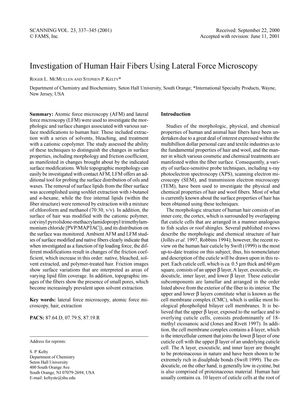Investigation of human hair fibers using lateral force microscopy
September 2001
in “Scanning”

TLDR Hair treatments like bleaching increase friction by exposing tiny pores on the hair surface.
In 2001, researchers used lateral force microscopy (LFM) to study the surface changes and frictional properties of human hair fibers after various treatments. They found that treatments like bleaching and solvent extraction increased the visibility of natural micropores on the hair surface and altered the friction coefficient, with the order from lowest to highest friction being native, bleached, solvent-extracted, and polymer-treated hair. The study also noted that a cationic copolymer formed crater-shaped structures on the hair surface. LFM data correlated well with macroscopic combing analysis, indicating its potential to provide insights into hair's frictional properties. The study concluded that increased friction on hair fibers is primarily due to local effects, such as the exposure of micropores after the removal of surface oils. The research was supported by International Specialty Products, Inc. and included discussions with Dr. Janusz Jachowicz.
View this study on onlinelibrary.wiley.com →